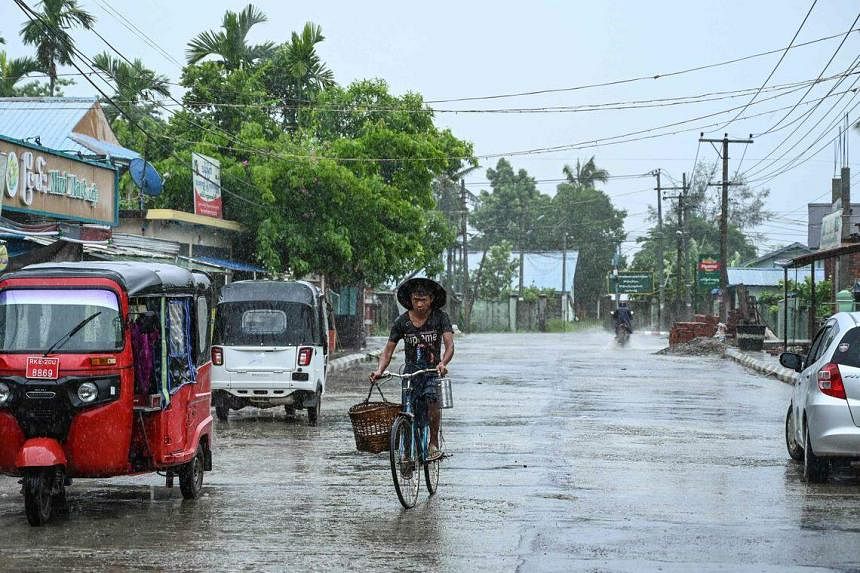Global Courant 2023-05-14 09:00:00
KYAUKTAW, Myanmar — The most powerful cyclone in the Bay of Bengal for more than a decade was expected to make landfall on Sunday, with hundreds of thousands evacuated from the coasts of Myanmar and Bangladesh to seek shelter from strong winds and rain.
Cyclone Mocha had winds of up to 150 mph, according to the Zoom Earth website, which classified it as a super cyclone.
It is expected to make landfall around 0630 GMT (2.30pm Singapore time) between Cox’s Bazar, where nearly a million Rohingya refugees live in camps consisting largely of flimsy shelters, and Sittwe on Myanmar’s western coast of Rakhine.
“The winds are getting stronger at the moment,” rescue worker Kyaw Kyaw Khaing told AFP from the town of Pauktaw, about 25 km inland from Sittwe, where he said about 3,000 people had arrived to seek shelter.
“We have distributed enough food for one or two meals to the people who have been evacuated to temporary shelters. I don’t think we can’t send food today because of the weather.”
Thousands left Sittwe on Saturday, packed into trucks, cars and tuk-tuks and headed inland for higher elevations, as meteorologists warned of storm surges of up to 3.5 metres.
“We are not doing well because we have no food and other supplies to cook,” said Ms. Maung Win, 57, who spent the night in a shelter in Kyauktaw town. “We can only wait to get food from people’s donations.”
Bangladeshi authorities have secured 190,000 people in Cox’s Bazar and nearly 100,000 in Chittagong, division commissioner Aminur Rahman told AFP on Saturday.
The rain and wind were felt in Myanmar’s commercial center of Yangon, about 500 km away, residents said on Sunday.
The Myanmar Red Cross said it was “preparing for a major emergency response”.
In Bangladesh, authorities have banned Rohingya refugees from building concrete houses, fearing it could encourage them to settle permanently rather than return to Myanmar, which they fled five years ago after a brutal military crackdown.
“We live in houses made of tarpaulin and bamboo,” says refugee Enam Ahmed in the Nayapara camp near the border town of Teknaf. “We are afraid. We do not know where we will be sheltered.”
The camps are generally slightly inland, but most are built on slopes, exposing them to the threat of landslides.
Forecasters expect the cyclone to bring a torrent of rain, which could trigger landslides.
Officials moved to evacuate Rohingya refugees from “high-risk areas” to community centers and more solid structures such as schools, but Bangladesh’s Deputy Refugee Commissioner Shamsud Douza told AFP: “All Rohingyas in the camps are at risk.”








